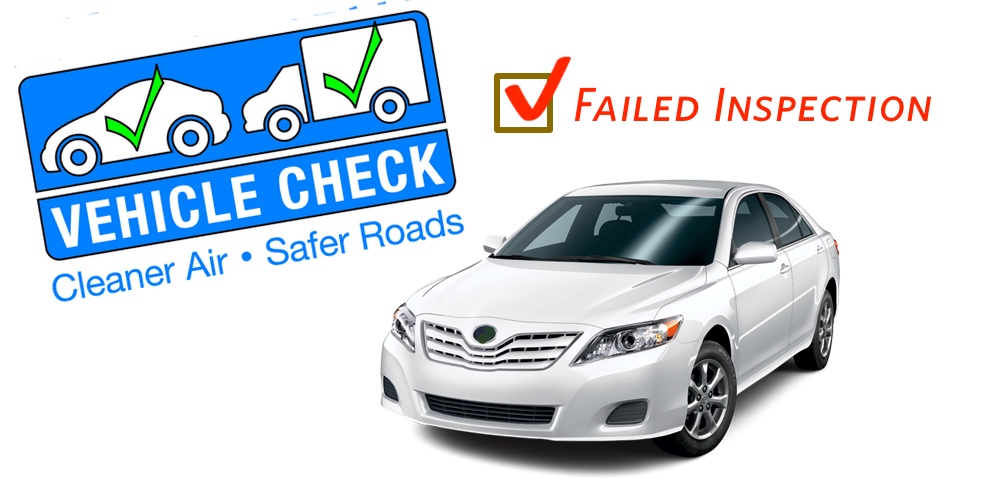Written by Rob Grant, Automotive Operations Manager at Openbay. Rob is an ASE Certified Technician and frequent contributor to this blog, specializing in all things automotive service and repair.
Taking your car in for a required state inspection is never fun, but having it fail inspection is even worse. If you’ve found yourself in this situation, don’t lose hope. As a seasoned Automotive Operations Manager and ASE Certified Technician, I’ll go over some of the most common reasons vehicles fail inspection—and what steps you can take to get your vehicle serviced to pass inspection.
Check Engine Light and ‘P Codes’
When your vehicle’s “check engine” light illuminates after your vehicle has been running, this is shorthand for “something’s wrong with your vehicle and it needs to be inspected.” The reason the message doesn’t get any more specific is because there’s just not enough room on your instrument panel to display a catalog of messages. The number of possible error codes and factors is vast—there are, in fact, 18,000 of them! These error codes are called “P codes”, and depending on what code the diagnostic equipment returns, it could mean a number of things need to be fixed. Here’s a breakdown of some of the most common P codes and what they mean.
Vapor leak – EVAP
P Codes Associated: P0442, P0455, P0456
These error codes all point to a leak in your vehicle’s Evaporative Emissions System (EVAP for short). Your vehicle’s EVAP system is there to capture environmentally harmful oil and fuel vapors and recycle them into the fuel system. When there’s a leak in the EVAP system, it can’t hold pressure, which causes your check engine light to come on.
The root issue is typically a non-sealing gas cap, a cracked rubber hose, or a problem with the charcoal canister that filters the vapors before they’re released into the environment. Depending on the cause, getting it fixed can run from $100 to $800. You can take a look for yourself by popping the hood and making sure there aren’t any disconnected or cracked hoses, but sometimes it takes a mechanic blowing smoke into the system to find a tough-to-spot leak. Doing this requires expensive equipment and could lead to a costly diagnostic fee.
Oxygen Sensor
Codes Associated: P0150 through P0175, sometimes P0420, P0430
These P codes indicate an issue with your vehicle’s oxygen sensor. This system measures the level of oxygen in your exhaust system and makes adjustments that cause better performance and lower emissions. Most four- or five-cylinder engines have two oxygen sensors; V6, V8, V10, and V12 engines usually have four. All work on the same circuit and all need to be connected to your car’s computer to work properly. If one of the sensors goes offline or becomes corroded, the whole system malfunctions. An oxygen sensor repair is typically very simple, but the sensors themselves can range from $100 to $400. You can learn more about oxygen sensors and the P0420 code here.
Catalytic Converter
Codes Associated: P0420, P0430
If you see these P codes, you’re most likely in for a serious repair. A vehicle’s catalytic converter heats up exhaust gases and converts pollutants like hydrocarbons and carbon monoxide into carbon dioxide and water. It doesn’t convert all gases but manages to eliminate most of them by using precious metals like platinum and palladium. This is one of the reasons catalytic converters are so expensive to replace. Some states allow vehicles to use universal-based converters, which can save a lot of money, but depending on where you live this may not be an option. Any exhaust-based service shop can weld on a new universal converter, but standard shops will use a direct fit, which is more expensive. Important: Sometimes a faulty oxygen sensor can trigger these codes, so before you spend a lot of money on a new catalytic converter be sure you’re working with a qualified repair shop that can spot the difference.
Control Arms and Ball Joints
Control arms and ball joints are what control your suspension’s up and down movement. Over time, these parts can wear and become loose, causing your vehicle to fail safety inspection. These parts are usually a simple process to replace, but the parts themselves can be costly, which will drive repair costs anywhere from $200 to $1,000. Tip: Find out if the shop doing the work has the proper equipment to replace the ball joints themselves rather than having to replace the whole control arm. This can save you money.
Tie Rod Ends
Tie rod ends control your steering’s side-to-side movement. Most vehicles have four tie rod ends, whereas trucks may have more, including the pitman and idler arm. Tie rod ends generally cost $50 to $100, and that’s just for the part. Labor is extra, but they can usually be replaced in less than an hour. A wheel alignment is always done after installation to make sure the vehicle rolls straight, which prevents your tires from wearing out prematurely. Tie rod ends are critical to your safety and that of your passengers. Without them, you can’t steer. While not all states require a steering and suspension safety inspection as part of their registration process, you should always address the underlying issues of a check engine light to keep yourself and others around you safe.
Save upwards of 25% on
car repair and maintenance services with Openbay+

